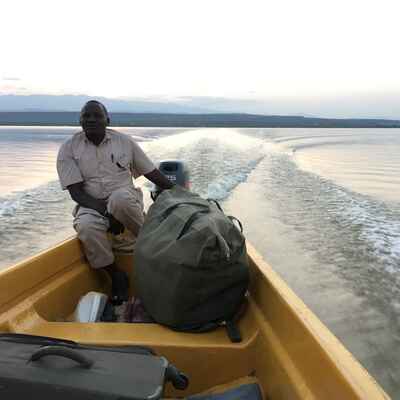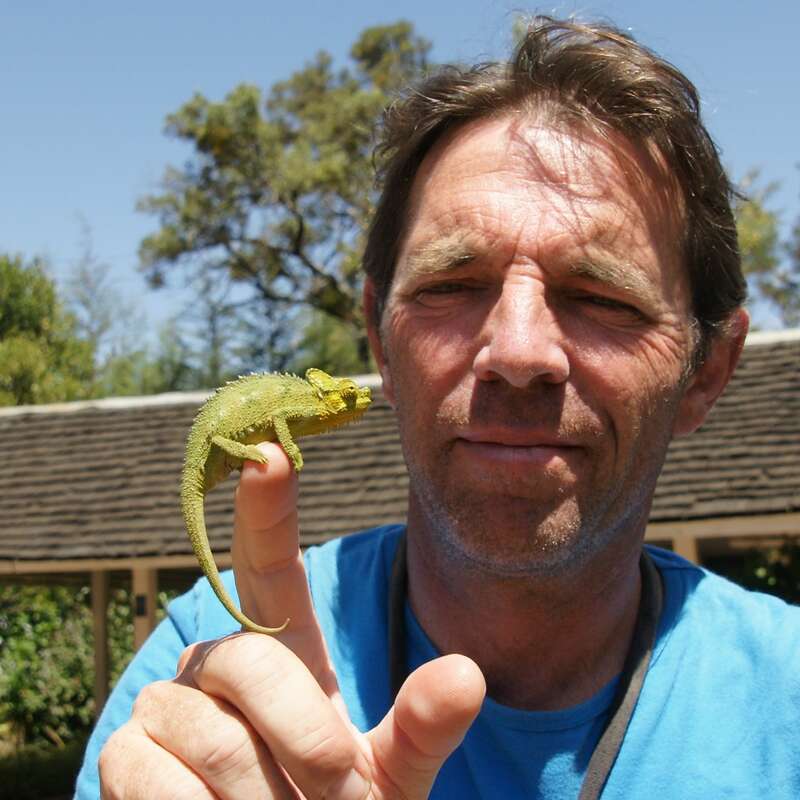About Island Camp Baringo
One of the oldest tented camps in Kenya, Island Camp opened in 1972.
It has long attracted Kenyan birders and the majority of its guests are local residents. It occupies the southern tip of Ol Kokwe Island, in the centre of freshwater Lake Baringo. The camp sprawls across the bush covered hillside and consists of basic tented rooms and some larger, more spacious accommodation.
While it can no longer be considered a luxury establishment, Island Camp has decades of reputation behind it and a loyal fan base of Kenyan birders. The old tented rooms are quite simple, verging on basic, and even the superior cottages aren't the height of luxury. Nevertheless, the combination of location, helpful and pleasant staff, the excellent swimming pool, and the wonderful birds themselves, make this a top choice in a part of Kenya that’s not over-supplied with good places to stay.
Our view
While it can no longer be considered a luxury establishment, Island Camp has decades of reputation behind it and a loyal fan base of Kenyan birders. The old tented rooms are quite simple, verging on basic, and even the superior cottages aren't the height of luxury. Nevertheless, the combination of location, helpful and pleasant staff, the excellent swimming pool, and the wonderful birds themselves, make this a top choice in a part of Kenya that’s not over-supplied with good places to stay.
Accommodation
16 tents and rooms
Children
Fine for children of all ages under supervision
Open
All year
Activities

4WD Safari

Birdwatching

Boat trip

Fishing

Guided walking safari

Private activities

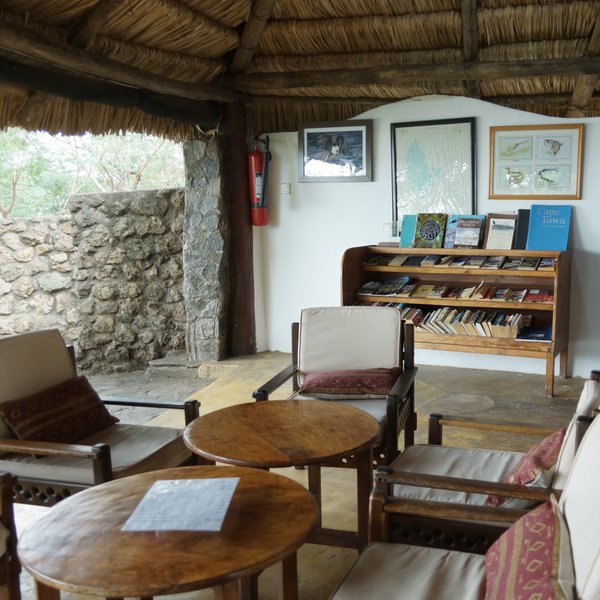
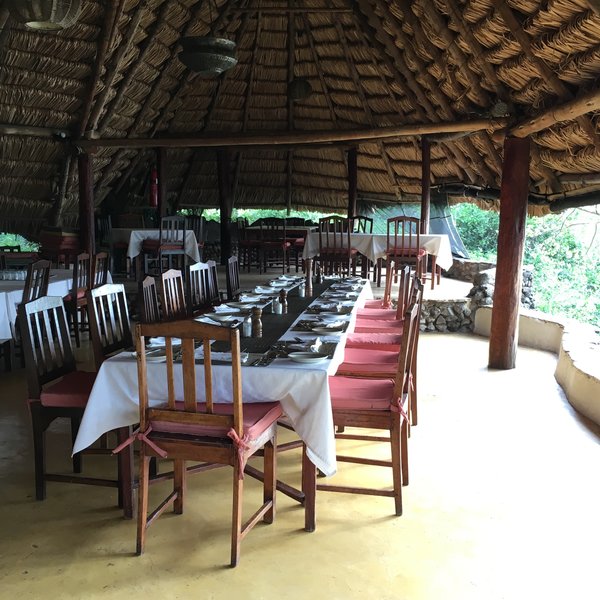
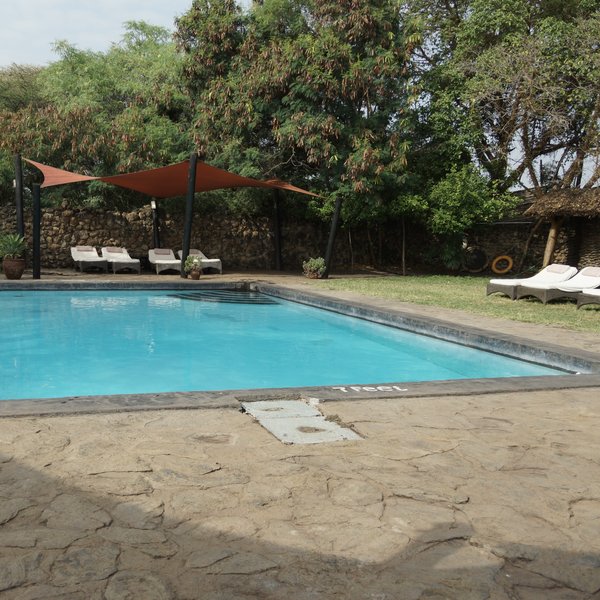
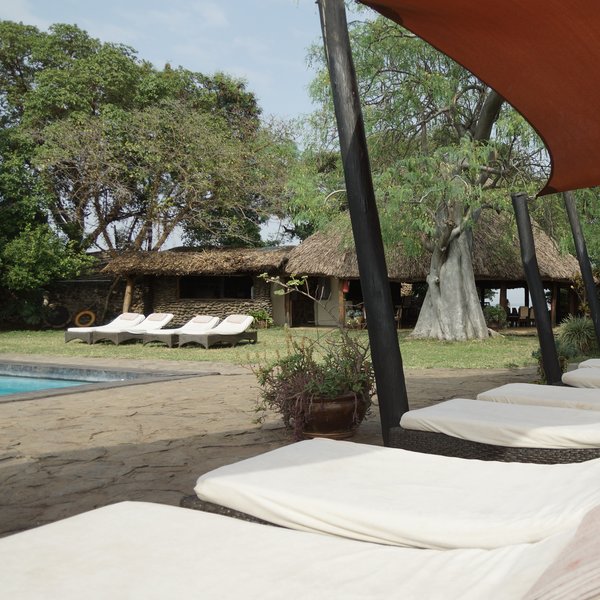
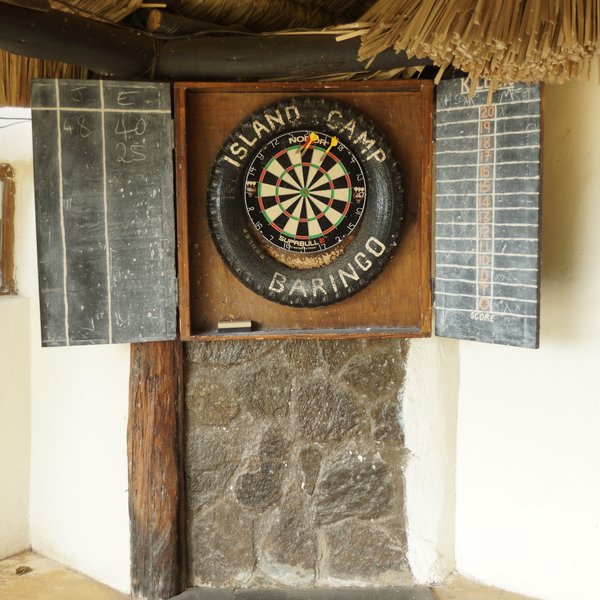
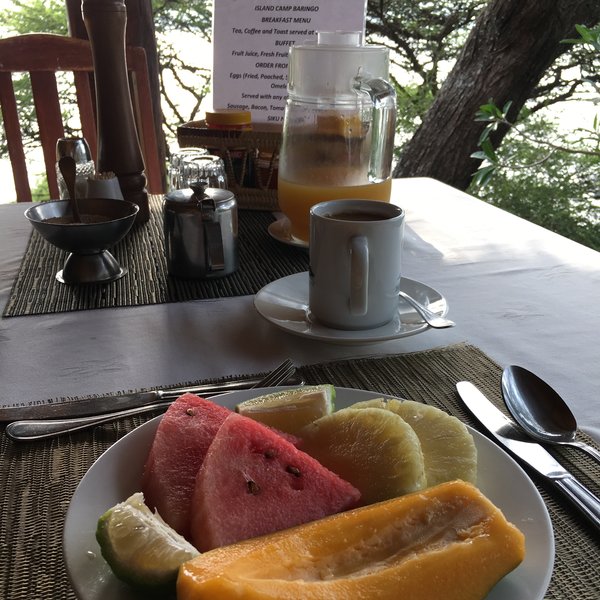
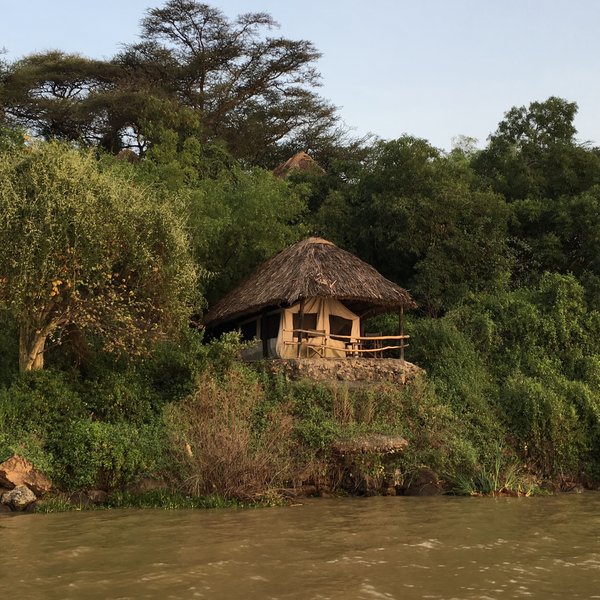

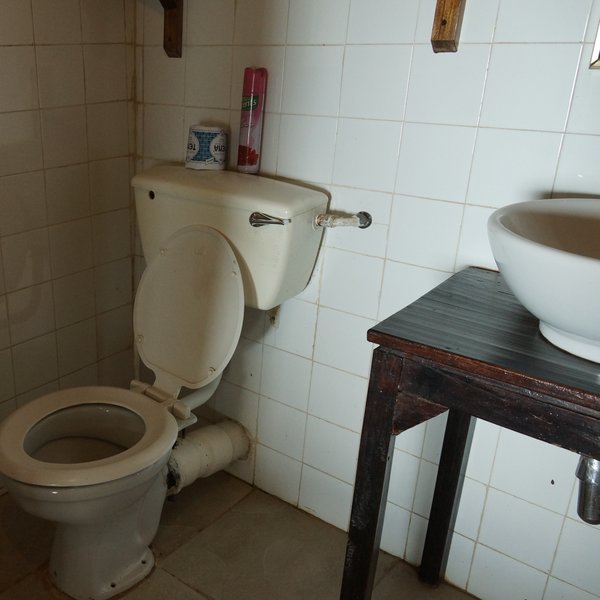
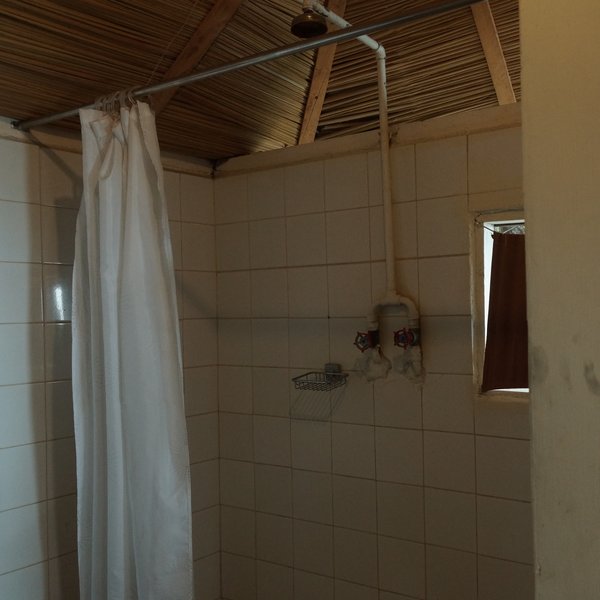
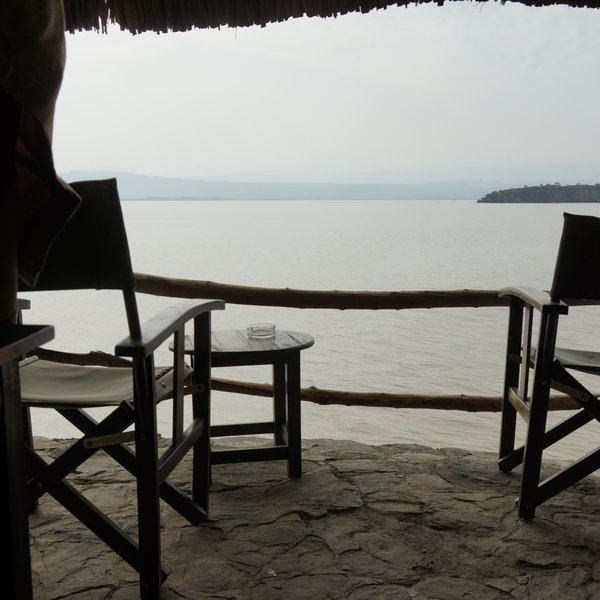
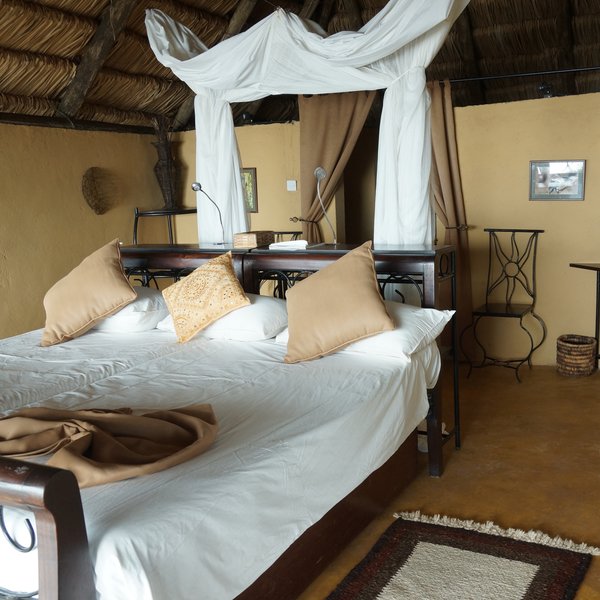
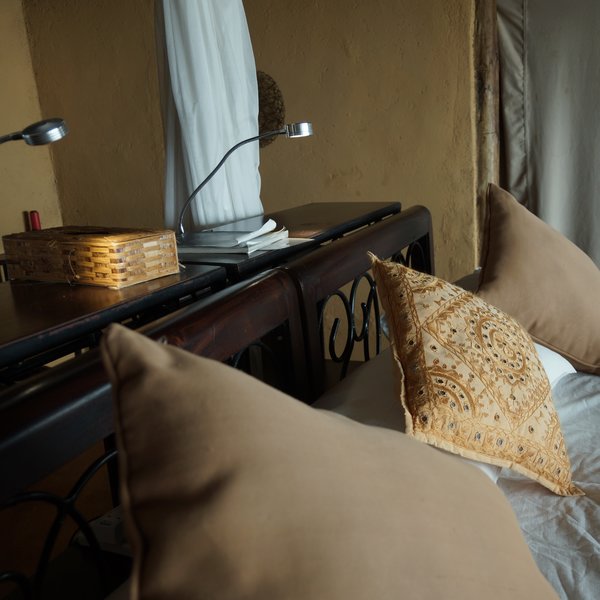
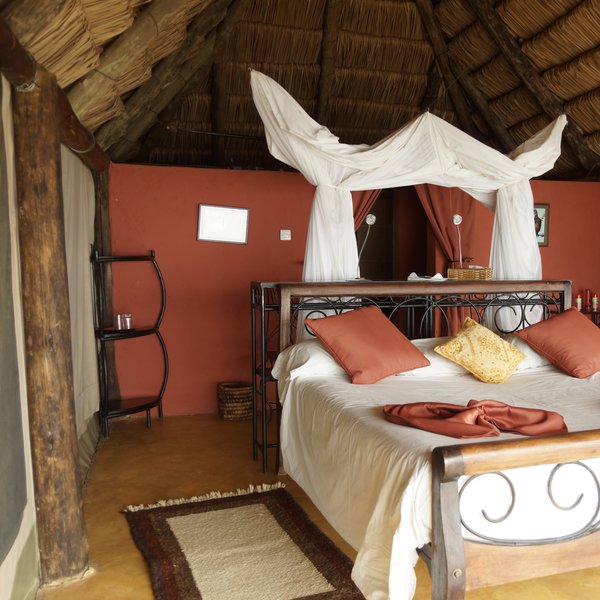
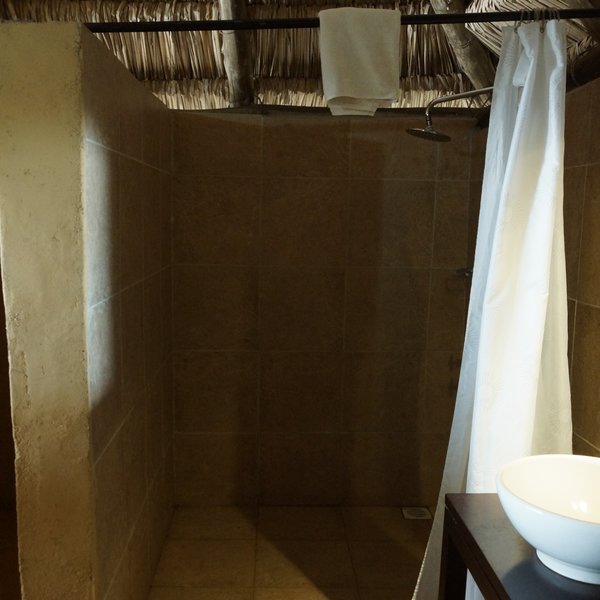
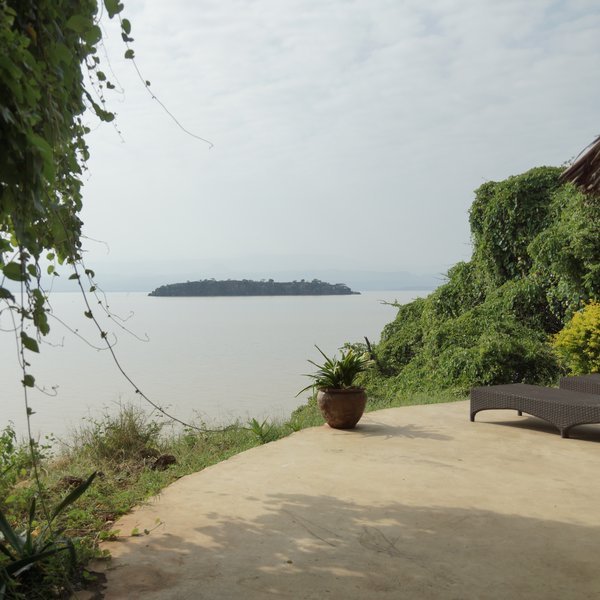
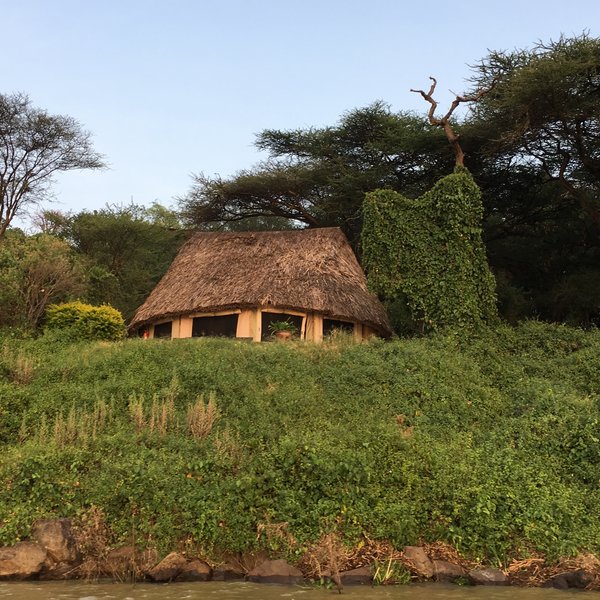
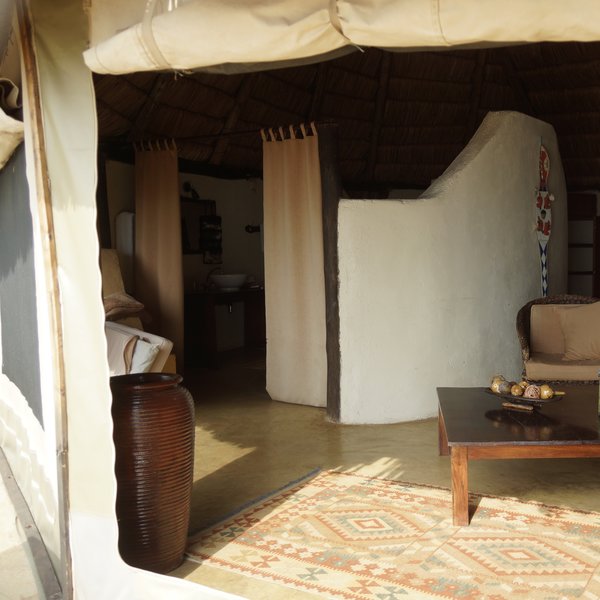
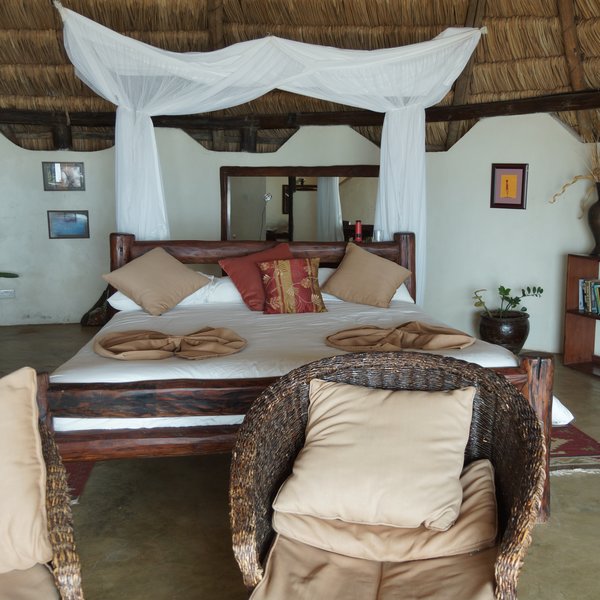
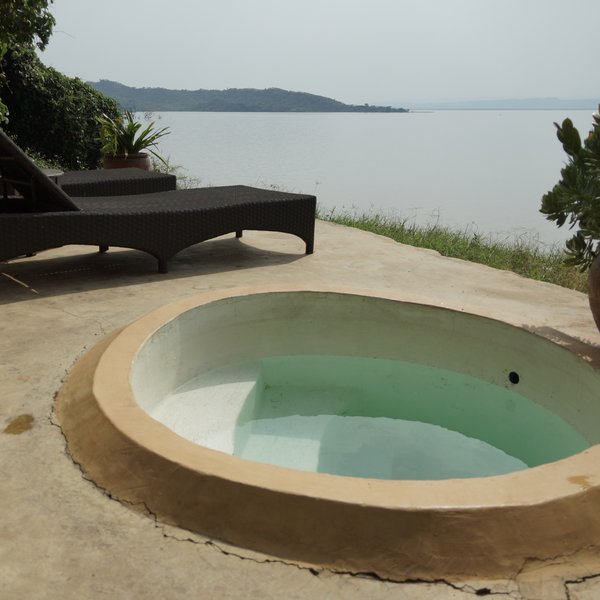
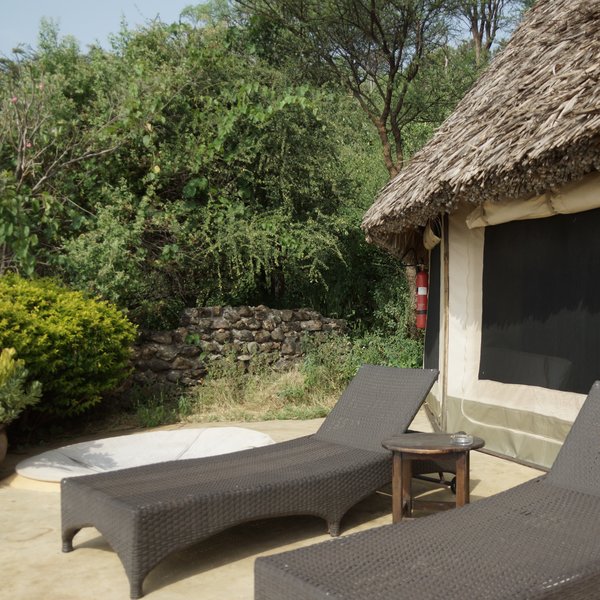
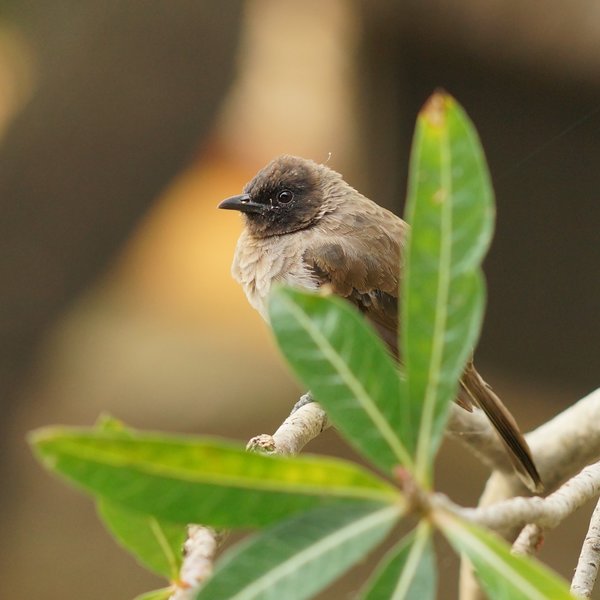
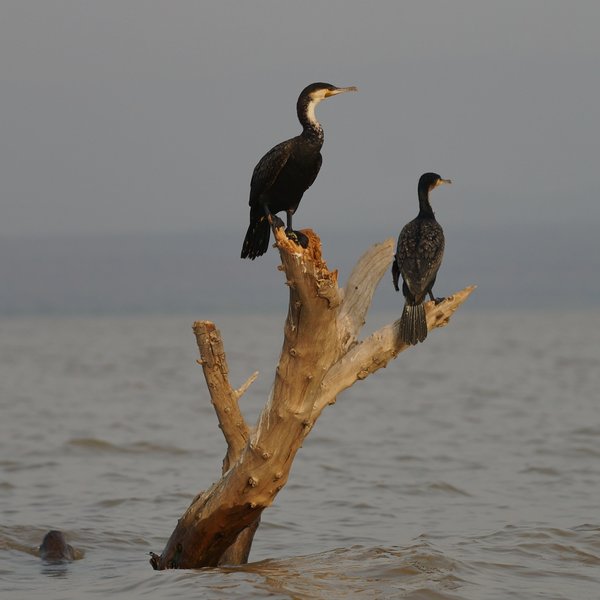
Expert Africa's gallery
When we travel we take lots of photos ourselves to give you a real and un-edited view of the safaris. See our 24 pictures of Island Camp Baringo to get the candid view.
View galleryIsland Camp Baringo: Our full report
One of the oldest tented camps in Kenya, Island Camp opened in 1972.
It has long attracted Kenyan birders and the majority of its guests are local residents. It occupies the southern tip of Ol Kokwe Island, in the centre of freshwater Lake Baringo. The camp sprawls across the bush covered hillside and consists of basic tented rooms and some larger, more spacious accommodation.
Unfortunately, the camp changed its booking model during the pandemic, meaning you can't book a tent for a few nights but have to take the camp in its entirety. Please talk to us at Expert Africa to find out if this arrangement is still in force.
Getting to Island Camp starts with the journey to Kampi ya Samaki, the lakeside fishing village where Island Camp's jetty is located. Guests are met by one of the camp's three fibre-glass motorboats and you walk to the end of the jetty and step aboard, donning a life jacket immediately. The journey is usually smooth, passing bird life and the snouts of the odd croc or hippo, but rougher conditions sometimes arise part-way through the journey.
You arrive on the western side of Ol Kokwe Island and a few steps take you up to the reception area. Further steps lead to the tents, cottages and common areas of the camp. There's a large shady bar area, a restaurant area and a further bar area by the large swimming pool at the 'summit' of this part of the island some 10 metres above the lake surface. The pool is a lovely feature of the camp - around 12m (40ft) long by 6m (20ft) wide and some 1.5m to 2m (4-7ft) deep. However, be aware there is no pool guard. Nearby, a pool bar, changing rooms, table tennis and dart board are all on hand as are a set of pool loungers, in good condition.
Island Camp's tents and rooms are all on the eastern side of the island, looking towards the sunrise, and the nearby Gibraltar Island, also known as Devil's Island. The camp's back-of-house set-up is on the western side of the island, where the chugging generator is housed (relatively out of earshot). The camp has five "classic tents"(two twins, one double and two triples), seven much larger 'deluxe tents' (which can be set up as twins or doubles, and also have 'under-beds' to provide for a third person, usually a child), and four 'superior cottages', 2 of which are double, 1 twin and 1 triple or family unit, which can sleep up to five people. All the tents are accessed via crazy paving pathways and steps that wind through the foliage, keeping you nicely shaded in the daytime. After dark, you will need a good torch to find your way back to your room, and possibly the accompaniment of an askari. We don't recommend this camp for people with mobility challenges, but the staff suggest that deluxe tents #22 and #23 are the most suitable for people with limited mobility as they are closest to the central areas and the jetty.
Island Camp's five classic tents are small and basic. Like all the accommodation the beds have mosquito nets, though in these small tents they drop from a single point, offering a pyramid of protection which isn't ideal. Their solid-wall bathrooms have the elementary requirements – hot and cold runnning water, a flush loo and simple shower. Out at the front, there are great views of the lake from the all the tents - and the classic tents have simple chairs.
The seven deluxe tents are much larger, with more space to move around inside the tents and slightly more stylish bathroom areas. The mosquito nets provide full height protection, and their verandas are a little more spacious.
The four superior cottages are the accommodation that Expert Africa recommends at Island Camp. These simple, banda-like cottages are quite spacious, with large beds, full-height mosquito nets and spacious bathroom areas (showers only, no bathtubs). Each cottage has a small plunge pool in the deck area at the front, and recliners. There's further seating and tables inside.
This part of the Rift Valley can be very hot, and it's worth being aware that none of Island Camp's rooms or tents have fans. Toiletries are somewhat rudimentary, by comparison with most tented camps at this level – tubes of shampoo and small bars of soap.
Activities
Just wandering around the camp – up to the pool, down to the jetty – is a pleasure for most guests, as you're constantly distracted by the island's myriad birdlife, not to mention butterflies and lizards. Similarly, sitting with a camera or binoculars, and taking in the constantly changing view across the waters, is a deeply relaxing way to while away the hours.But the principal activity for many guests is getting out on the lake in one of the camp's three boats (two 25hp boats and one 55hp vessel). The boat used depends on the size of your group and life jackets are provided for all passengers. Like all the activities, boat trips are an extra cost, depending on how long you plan to be out on the lake and how far you're going. A typical trip leaves shortly after dawn and goes around Ol Kokwe Island and also visits Gibraltar Rock (Devil's Island), pausing to take pictures of the many species of birds and usually luring fish eagles down to the lake with offerings of fish thrown from the boat. If you want to be sure of getting good shots, we'd recommend you pay for a little extra fish and ask the boatman to position the vessel to take best advantage of the light. Longer excursions include a trip to the extensive marshy area around Ruko Conservancy, on the northeast side of the lake, where you can potter among the waterlilies, and also visit the conservancy itself on dry land, perhaps with a bush breakfast. The Ruko Community Wildlife Trust safeguards a small population of Rothschild giraffes that were trans-located from Soysambu Conservancy. Island Camp has three experienced bird guides: Dixon Maitano (the most experienced), Johnson Parsupore and Peter Leweri.
Because of the presence of crocodiles in Baringo, Expert Africa advises against trying water-skiing at Island Camp or using their inflatable 'donut'.
Visits to Lake Bogoria to see the flamingos are not currently offered by Island Camp as they don't have a vehicle based on the mainland. Our suggestion would be to incorporate a visit to Bogoria before or after staying here.
Activities
4WD Safari
Birdwatching
Boat trip
Fishing
Guided walking safari
Private activities
Families & children
- Attitude towards children
- The camp welcomes children.
- Property’s age restrictions
- None.
- Special activities & services
- None.
- Equipment
- Baby cots and high chairs are available.
- Generally recommended for children
- While the camp has most appeal for keen birders, the large swimming pool and novel location make it fun for children.
- Notes
- Children should ideally be good swimmers and little ones will need constant supervision.
Food & drink
- Usual board basis
- Full Board & Activities
- Food quality
- When we stayed in 2018 we were the only guests, but the meal service was very professional. Don't expect outstanding cuisine, but we thought the dinner and breakfast were good.
- Dining style
- Individual Tables
- Dining locations
- Indoor and Outdoor Dining
- Drinks included
- Drinks are not included, but are reasonably priced.
Getting there
- Location
- Rift Valley, Kenya
- Ideal length of stay
- 3 nights
- Directions
- The camp is a 20-minute boat ride (included in rates) from the lakeshore at Kampi ya Samaki, the only settlement of any size on Lake Baringo.
- Accessible by
- Fly-and-Transfer
Special interests
- Birdwatching safaris
- Island Camp Baringo is an outstanding spot for birding. The lake has long held the world record for the most birds recorded in a 24-hour period - 342 species. Water birds and dry-country birds can all be seen quite easily in this area and your breakfasts in camp are interrupted by a delightful procession of avian visitors to nearby trees and bushes and right onto your table.
- See ideas for Birdwatching safaris in Kenya
Communications
- Power supply notes
- A generator powers the camp. The deluxe tents and superior cottages have three-pin sockets where you can charge your batteries and devices. Guests in the classic tents would need to charge batteries in the bar or another common area.
- Communications
- Cellphone signal is reasonably good and the camp has Wi-fi around the pool bar.
- TV & radio
- There is no TV for guests, but they are welcome to join staff in the staff canteen when major sporting events are taking place.
- Water supply
- Other
- Water supply notes
- Water is pumped from the lake and treated. We found the large swimming pool crystal-clear. Purified drinking water is provided in flasks in the rooms.
Health & safety
- Malarial protection recommended
- Yes
- Medical care
- They have a simple first-aid kit. There's a dispensary in Kampi ya Samaki, the village on the mainland. Nakuru hospital is a 2-hour drive away. In an emergency, a helicopter could land nearby.
- Dangerous animals
- High Risk
- Security measures
- Askaris patrol the camp at all hours of the day and night.
- Fire safety
- The camp has a number of fire extinguishers and they do conduct fire training.
Useful info
- Disabled access
- On Request
- Laundry facilities
- A laundry basket and list of prices is provided in each room and items cost around USD1–2 each to launder. Ladies's underwear can't be included.
- Money
- There's a safe in the main office to store valuables. They don't offer a foreign exchange service.
- Accepted payment on location
- Cash in Kenya Shillings or US Dollars is happily accepted for payments. You can also pay for extras with a Visa or MasterCard and they don't charge a surcharge.
Plan and book your trip with Expert Africa
All of our trips are tailor-made, so we'll always adapt them to suit you. Talk to an Expert and let us plan and arrange your perfect trip.

Talk to an Expert
Call or email us now! We’ll match you with the Specialist in our team who is best suited to help you. Then together we can start planning your trip.

Set up your itinerary
Based on our experience and your ideas, your specialist will create a detailed, costed itinerary. We’ll refine it together, until we have a trip that you’re perfectly happy with.

Prepare for your trip
The same Specialist will make the seamless arrangements for your trip, send you detailed travel documents, and be available to answer any questions before you depart.

Travel with peace of mind
After you set off, you’ll be cared for by our partners in Africa, most of whom have worked with Expert Africa for decades. And if you ever need us urgently, we’re available 24/7.

When you return
We love to learn about your trip, and so will always be grateful if you’ve the time to give feedback to your Specialist when you return.
Island Camp Baringo's location
Look closer at the environment and surroundings of Island Camp Baringo.
Excursions from Island Camp Baringo
Optional extra day-trips and excursions possible whilst you're staying at Island Camp Baringo. Talk to us: these are usually best arranged before you go.
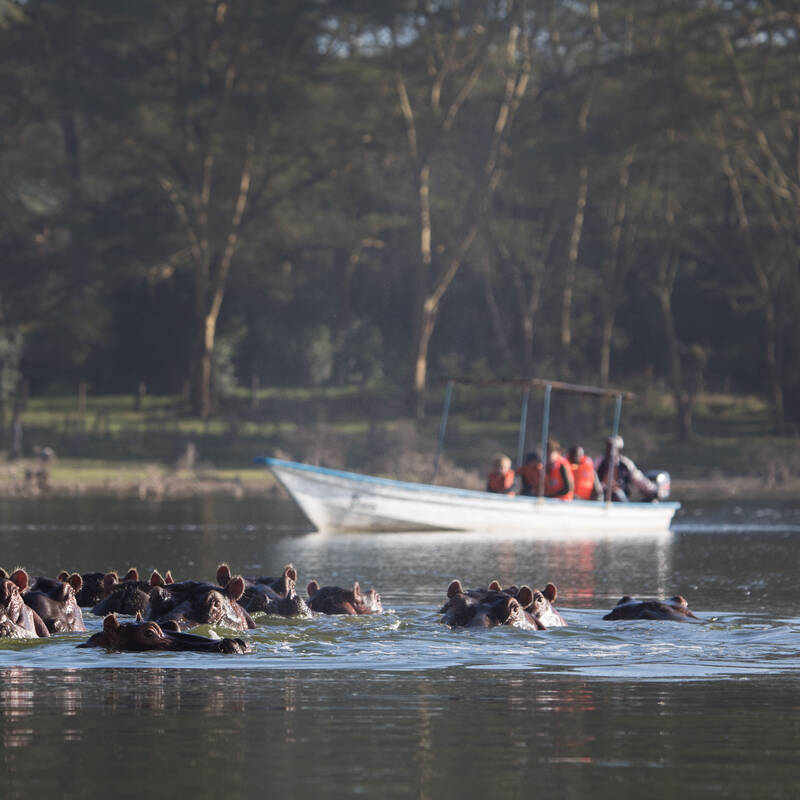
Lake Bogoria National Reserve
Half or full day
Seeing the Rift Valley's iconic pink flocks of flamingos massing on one of the region's lakes can be a somewhat hit-and-miss affair since lake water levels rose after about 2014 and the ecology of several of them changed significantly. Lake Bogoria, however, in the northern Rift, still usually retains some large flocks of many thousands of lesser flamingos.
More about Lake Bogoria visit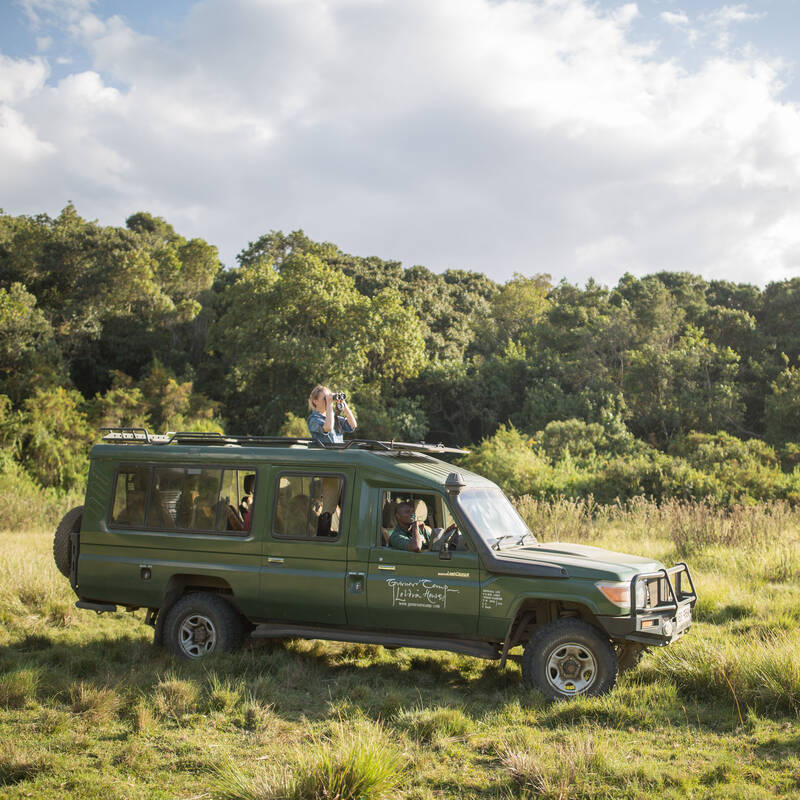
Lake Nakuru Safari
Half or full day
Drive into one of Kenya's best-known national parks to explore the lakeshore, woodlands, cliffs and plains around this iconic lake. While the flamingos may no longer be here, Nakuru has some key mammals, including both black and southern white rhinos, lions, leopards and Rothschild giraffes.
More about Lake Nakuru SafariOther lodges in Rift Valley
Alternative places to stay in this same area.
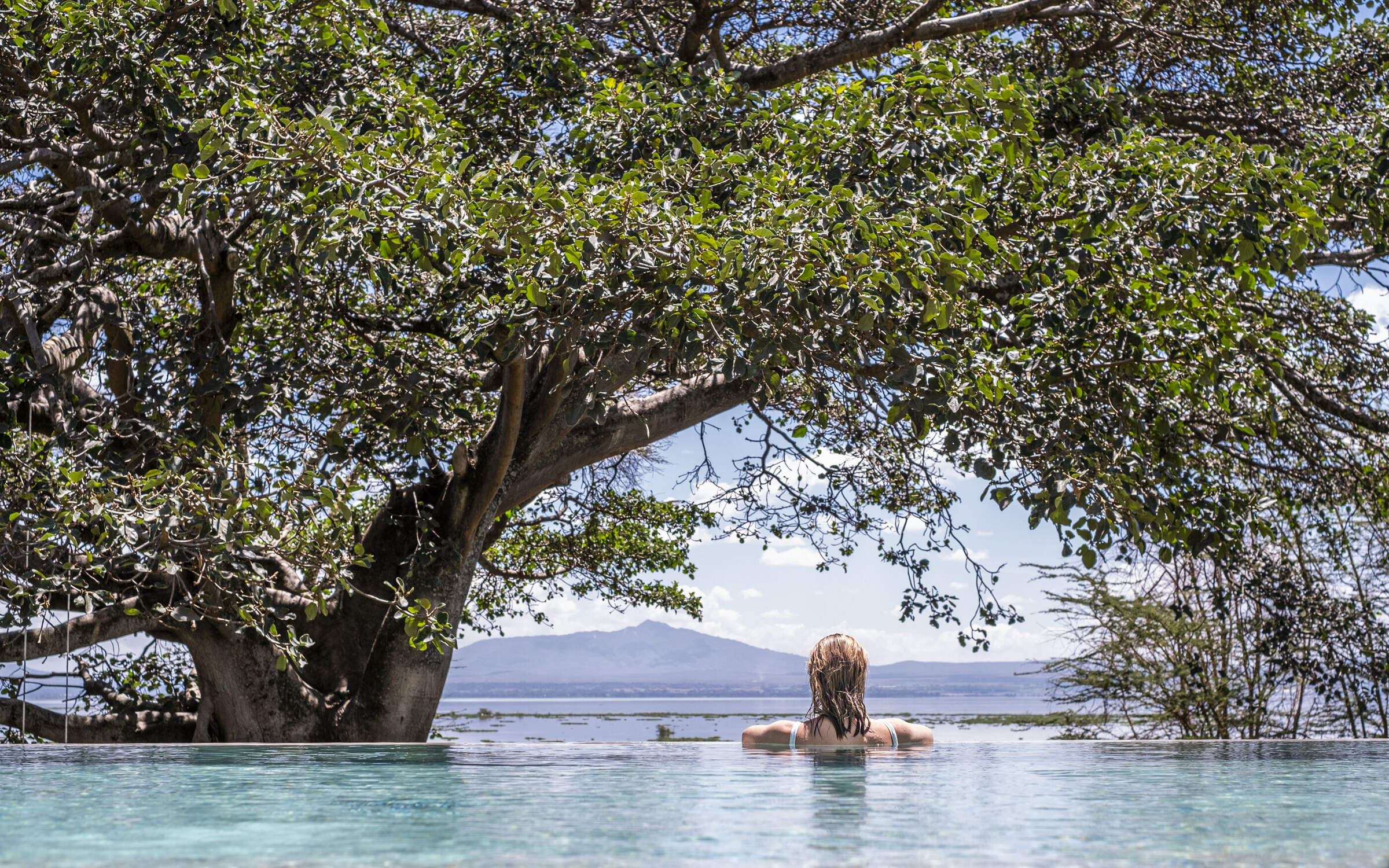
Loldia House
Loldia House is a comfortable, country house lodge on the shores of Lake Naivasha in the heart of Kenya's Great Rift Valley.
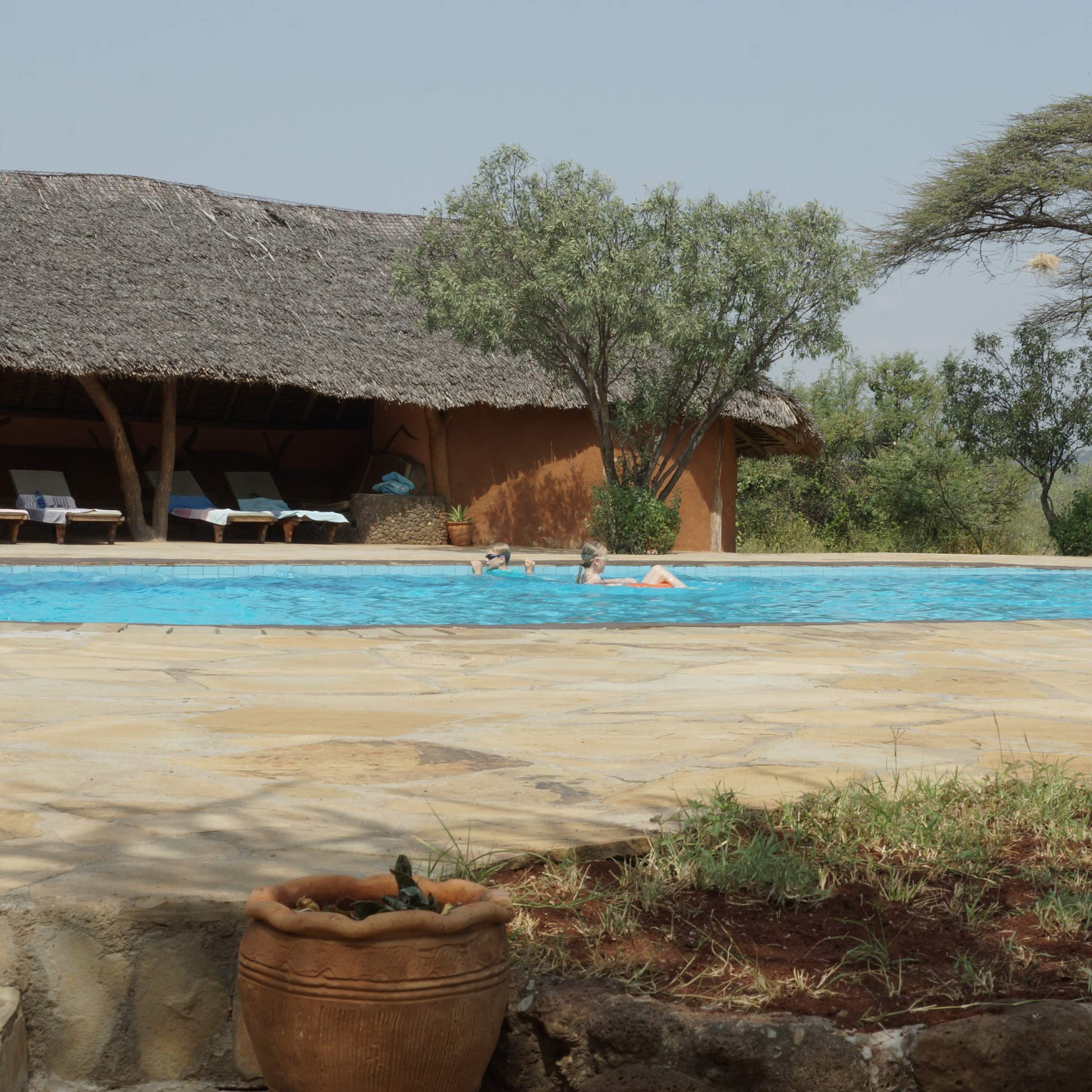
Tumbili Cliff Lodge
Tumbili Cliff Lodge is located on a low cliff on the western shore of Lake Baringo, in Kenya's Great Rift Valley.
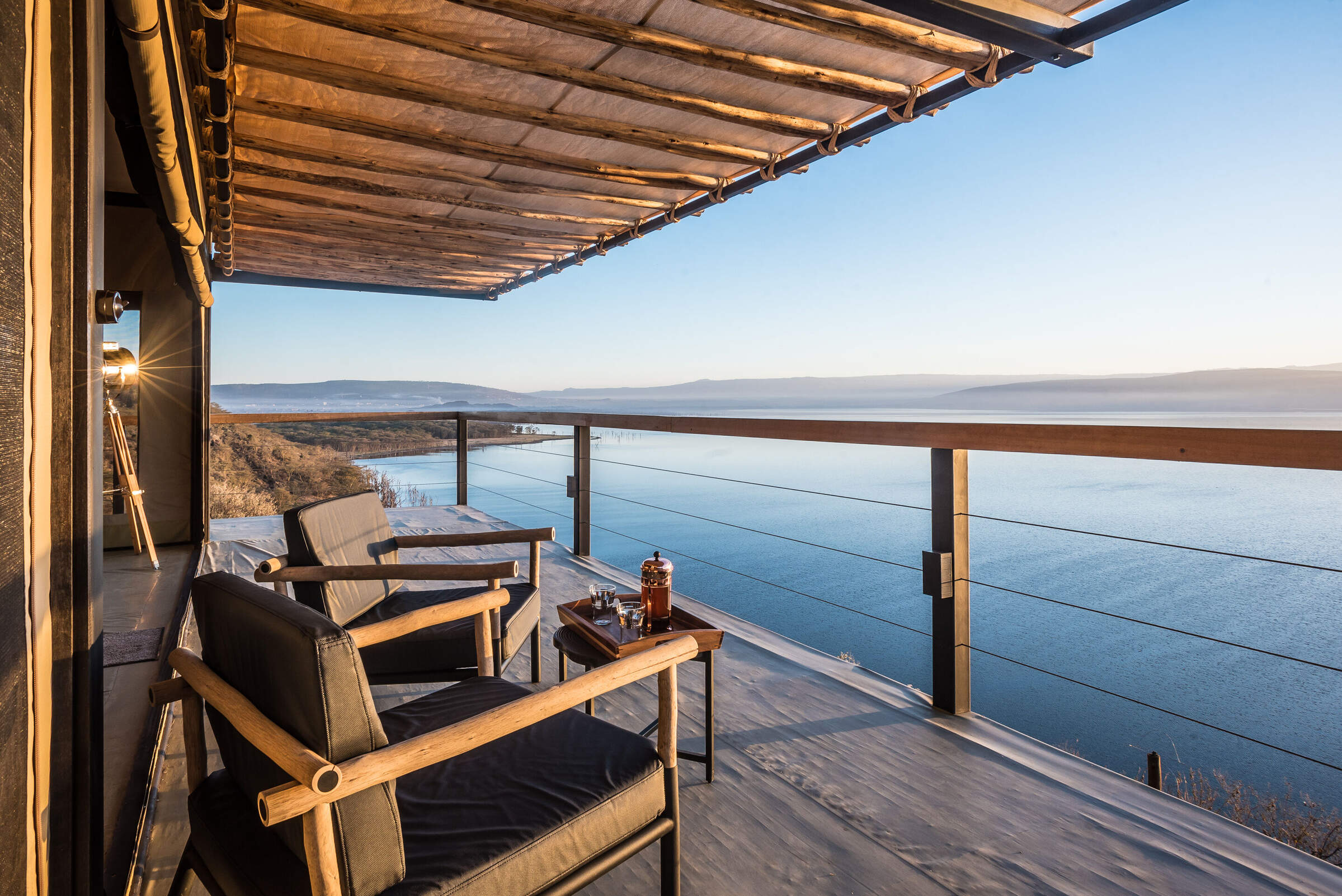
The Cliff
The Cliff is a comfortable, luxury tented camp overlooking Lake Nakuru, in the heart of Kenya's Great Rift Valley.
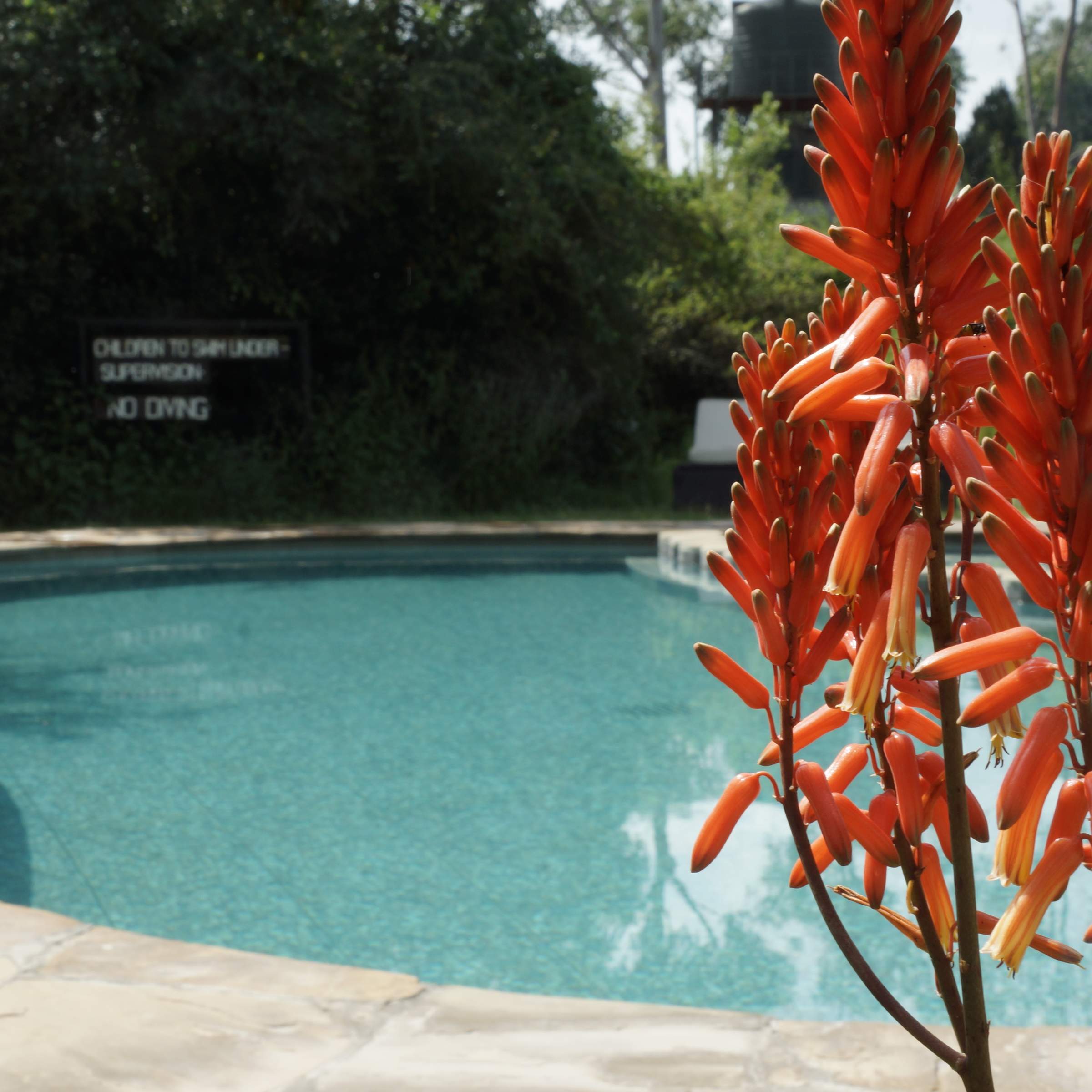
Mbweha Camp
Mbweha Camp is a well-established safari lodge on private land close to the Nderit Gate of Lake Nakuru National Park in Kenya's Great Rift Valley.
When to go to Rift Valley
Our month by month guide: What it's like to visit Island Camp Baringo in Rift Valley
Jan
Feb
Mar
Apr
May
Jun
Jul
Aug
Sep
Oct
Nov
Dec
Kenya in January
Clear, hot days and warm nights make this high season a popular time for safaris and it’s also good for diving and snorkelling as water clarity is excellent and gets better as the dry season progresses. Most lodges and tented camps treat January after the New Year week is over, as mid-season, making it a good compromise in terms of value for money with reasonably reliable, dry weather and some greenery left in the landscape.
Expert Africa bases its description of climate and weather in January, like the other months of the year, on the climate records of roughly the last 100 years, and it's fair to say that the weather and seasons since the beginning of this century have been highly irregular and unpredictable.
- On average, January is the second driest month of the year
- Elephants dig waterholes in the dry riverbed in the Samburu reserve.
- Wildebeest and many antelope have their calving season, to February.
- Migrant birds are seen in huge numbers, especially in the Rift Valley.
- Sea water clarity around the coral reefs generally good.
Our view
Fantastic: the very best time to visit
Weather in January
Kenya in February
With the short dry season well established, the grass grazed down and wildlife gathering close to water points, this is still a good time for a safari. Good water clarity in the Indian Ocean's coastal waters makes for excellent diving and snorkelling conditions.
Expert Africa bases its description of climate and weather in February, like the other months of the year, on the climate records of roughly the last 100 years, and it's fair to say that the weather and seasons since the beginning of this century have been highly irregular and unpredictable.
- On average, February is the driest month of the year.
- It’s sometimes possible to swim with whale sharks at Diani Beach.
- Migrant birds are still seen everywhere, especially near water.
- This is usually peak calving season for wildebeest and many antelopes.
- This month is often the hottest of the year, especially on the coast.
Our view
A very good time to visit
Weather in February
Kenya in March
Hot, increasingly humid weather – with good diving and snorkelling conditions at the start of the month – gives way to rains and lower accommodation costs. Expert Africa bases its description of climate and weather in March, like the other months of the year, on the climate records of roughly the last 100 years, and predicting the seasons since the beginning of this century has been difficult.
March is the month when – traditionally – intensely hot conditions build up until a cloudburst finally happens at the end of the month or in early April, to relieve the humidity. As ever, regional variations across the country can greatly impact on visitors' experiences.
- Sea-water clarity is best for diving before the long rains start.
- Visitor numbers are low, though the Easter holidays can be busier.
- Night skies can be scintillatingly clear in early March.
- Cropped down savannah grasses can make it easier to see the wildlife.
- Temperartures climb high, especially at lower elevations.
Our view
A good time to visit, with pros & cons
Weather in March
Kenya in April
April sees the full onset of the southeast monsoon wind or kusi, which heralds the long rains. Temperatures drop soon after the rains are established and you’ll often have facilities largely to yourself in this more affordable low season, sometimes known as the "green season". The bush quickly springs to life, with greenery sprouting almost before your eyes. While you're likely to get a fair number of heavy showers, the breaks in the rain can yield sparklingly clear conditions.
With the dust settled and bright sun piercing the clouds, conditions can be sublime for photography, especially first thing in the morning or in the late afternoon with another storm brewing. You may be lucky, or you may find conditions very wet and muddy.
- A wet month, the coast often gets more than 300mm (12in) of rain.
- Sunny spells can provide great light for photography.
- Buffalo and zebra calving season often happens in this month.
- Baby crocodiles hatch, for example on Central Island in Lake Turkana.
- Palearctic migrant birds gather to fly north to breeding grounds.
Our view
A time to avoid if possible
Weather in April
Kenya in May
While game viewing can be trickier as vegetation runs riot, between the cloudbursts the colours and light are great for photography at this time of year. Expert Africa bases its description of climate and weather in May, like the other months of the year, on the climate records of roughly the last 100 years, and while it's reasonable to expect heavy rains in many parts during this month, especially on the coast, the rains don't always come evenly or in some areas come at all.
In an El Niño year, the so-called long rains that normally are established across much of the country by May can be meagre, to the despair of farmers. On the other hand in a La Niña year, the long rains can bring floods. On the coast, the monsoon winds make the climate much more predictable, with heavy rains common throughout this month.
- Frogs breed in the ponds in the Arabuko Sokoke Forest near Watamu.
- Wildebeest, impala and other grazers are in rut (the breeding season).
- Kilimanjaro looks its best as heavy rain falls as snow on the summit.
- There's a sharp peek of rainfall on the coast with many rainy days.
- Accommodation prices are uniformly low, while some camps close.
Our view
A time to avoid if possible
Weather in May
Kenya in June
The rains give way to cloudy, cooler weather, often making for comfortable conditions by the end of the month, especially in the highlands. Starting from mid-June or the beginning of July and running until the end of October, this is the high season, and accordingly has higher accommodation rates and – at least until early September – higher numbers of visitors.
While the early part of June can often be rainy on the coast, it can be a great time to go on safari, with fresh greenery, many young animals and good photographic conditions with clear air.
- The Taru Desert, inland from the coast, is carpeted with flowers.
- The Lake Turkana Cultural Festival is held in Loiyangalani.
- Madaraka Day (commemorating self rule) is 1 June.
- The annual Lewa marathon runs a course through the wildlife.
- The Diani Rules "sports" event rips up the rulebook at Diani Beach.
Our view
A good time to visit, with pros & cons
Weather in June
Kenya in July
Kenya’s “winter" season sets in (winter is a misnomer but locals feel the change), and the highlands can be rather grey. Skies are often cloudy and the days can be surprisingly cool, with an average daytime high in many highland safari areas of 15-20°C and night-time temperatures dropping below 10°C in Nairobi and the highlands. Lower parts of the country and the coast are usually warm and dry, typically reaching highs of around 25°C with lows in the high teens.
As this is the start of the high season, coinciding with the usual arrival of the wildebeest migration in the Maasai Mara, July is a busy month. Ask your Expert Africa specialist to advise on how to avoid the crowds, which is not that difficult to do.
- The wildebeest migration usually reaches the Maasai Mara in July.
- Simbi Lake (Kisumu) and Crater Lake (Naivasha) can attract flamingoes.
- Watersports start to pick up and some surfing is possible at Malindi.
- Afternoon thunderstorms are a common feature in the Maasai Mara.
- The sea can be choppy along the coast, making diving difficult.
Our view
A good time to visit, with pros & cons
Weather in July
Kenya in August
The Great Migration fills the plains of the Maasai Mara, and school’s out, so the park roads are full of tourists – ask your Expert Africa specialist for advice on crowd avoidance tactics. Choose a private conservancy rather than a public national park or national reserve for quieter conditions.
Like July, August is generally mild and relatively dry in the safari areas, but it can be very chilly in the highlands, even in the middle of the day, and hail occasionally falls above altitudes of around 2,400m (8,000ft). Nairobi can be disappointingly overcast, with low cloud.
- Apart from Christmas holidays, this is the busiest month of the year.
- Late August sees peak wildebeest drama at the Mara River crossings.
- Coastal winds are good for kite- and wind-surfing.
- Few mosquitoes are around at this generally dry time of year.
- The annual Camel Derby takes place in the Samburu capital, Maralal.
Our view
A good time to visit, with pros & cons
Weather in August
Kenya in September
The skies clearing of cloud signals the start of hot, dry weather with little chance of rain – and, after the first few days of the month, far fewer visitors – making the latter part of September a good time for a quieter safari. While early September is often good for dramatic migration crossings along the Mara River, you might consider deliberately postponing your trip until later in the month, when the migration can still be very impressive and visitor numbers fewer.
If tourist surges are somewhat predictable, however, the patterns of the wildebeest migration are more volatile, and like all of Expert Africa's climate and weather assessments, they are based on accumulated years of experience rather than guaranteed certainty.
- This is still high season, with prices to match.
- Many river crossings take place on the Mara river in both directions.
- Natural bush fires flush out insects and small animals for predators.
- The Rift Valley Music Festival takes place by Lake Naivasha.
- With school holidays over by early September, late-month is quieter.
Our view
Fantastic: the very best time to visit
Weather in September
Kenya in October
Still hot, mostly dry and not too busy, this is many people’s preferred month for a safari, and it’s also good for diving and snorkelling. The wildebeest and zebra herds of the great migration are often still to be seen, though in dwindling numbers. The swamps of Amboseli attract thirsty wildlife including large herds of elephants.
While we wouldn't expect much rain across most of the country this month, the climate has become so unpredictable that you can never say never, and the possibiity of the short rains – usually associated with November to mid-December, starting early, can't be discounted.
- This month sees the tail end of the great migration in the Mara.
- Palearctic migrant birds start to arrive, staying until March.
- Turtle nests hatch at Watamu, until November.
- Amboseli elephants focus on the swamps for their daily water.
- The Indian Ocean monsoon winds turn from southeast to northeast.
Our view
A very good time to visit
Weather in October
Kenya in November
The northeast monsoon wind or kaskazi heralds the start of the “short rains", usually some time in the second half of the month. From November to mid-December, this is the low season, and accordingly has lower accommodation rates and lower visitor numbers. Across most of the country you can expect warm, somewhat cloudy weather, with occasional heavy showers and localised flooding.
Expert Africa bases its description of the climate in November, like the other months of the year, on the records of roughly the last 100 years, and it's fair to say that the seasons since the beginning of this century have been highly irregular and unpredictable: some years the short rains don't come at all, or don't reach every part of the country. In an El Niño year, the November short rains can be very heavy, but in a La Niña year, they can fail completely.
- Swimming with dolphins in Lamu can be done from now until April.
- Birders gather at Ngulia in Tsavo West to ring Palearctic migrants.
- The Lamu Cultural Festival takes over the town and Lamu Creek.
- Agricultural shows often take place regional market towns.
- This is low season, so camps can be great value, with special offers.
Our view
A good time to visit, with pros & cons
Weather in November
Kenya in December
In a typical December, the rains usually finish by middle of the month, leaving the landscape looking its best, under clear blue skies, and heralding the start of the second peak tourist season from around 20 December to the first week of January. Our assessment of the likely weather in December, like the other months of the year, is based on climate records, and it's fair to say that the seasons since the beginning of this century have been highly irregular and unpredictable.
Christmas can sometimes be wet, but most years the rains have finished a week or two earlier, with the festive season ushering in the perfect combination of clear skies and sunshine by day and starry nights.
- Christmas and New Year are busy, with the lodges and camps full.
- Rates are highest after 24 Dec, with supplements on public holidays.
- Republic Day and Independence day are celebrated on 12 December.
- Good kite- and wind-surfing restarts, with strong northeasterly winds.
- Mango season begins, providing excitement for primates and elephants.
Our view
A good time to visit, with pros & cons
Weather in December

Looking for inspiration on where to travel next?
Visit our trip chooser to explore your options and find inspiration for your perfect African adventure
Inspire me